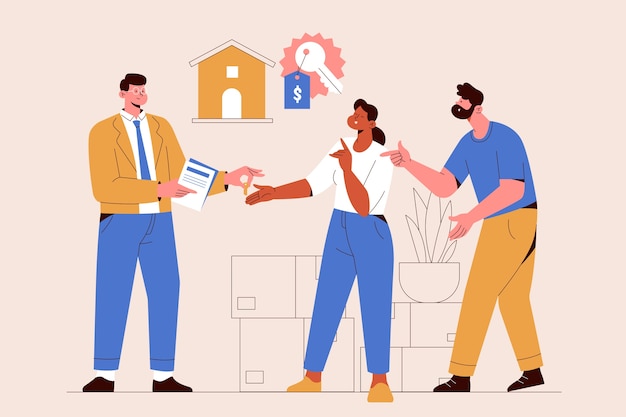
Before starting your house hunting with a real estate agent, it’s advisable to first confirm your mortgage qualification with a loan officer. Once you determine the type of mortgage that fits your financial situation best, your next step is learning how to prepare for acquiring that mortgage. A great starting point is scheduling a meeting with a loan officer to prequalify for a mortgage. Though this is a significant move, coming to the meeting well-prepared can make things run more smoothly, and free up your time and focus for house shopping.
Mortgage lenders require substantial documentation for approval, providing as much as you can early on will minimize delays later in the process. Understand the documents your loan officer needs, prepare them in advance, and you will have a seamless journey to the stage of closing the mortgage.
For a better understanding of the mortgage pre-approval process, we will guide you through the steps that will place you ahead when house hunting.
CONSIDERING FINANCES
You should ideally have some money saved for the down payment on your home. Review your savings—how much do you have available for a down payment? Remember, you may not want to deplete your savings entirely on the down payment as additional costs will arise.
The move to your new home will require money, even if you don’t hire professional movers. Upon move-in, you’ll likely discover a list of necessary items from the hardware store, not to mention minor repairs or home improvements to make your new place feel like home. While these costs may seem insignificant initially, they can accumulate quickly and can disrupt your budget. Therefore, reserve some money for unforeseen expenses.
HOW MUCH CAN YOU SPEND COMFORTABLY?
Before meeting with your loan officer, it’s crucial to know the maximum mortgage amount you’re comfortable with. If your loan officer suggests you qualify for a higher amount than anticipated, avoid exceeding your budget if you’re uncomfortable with a larger mortgage payment. Remember that mortgage payments include more than only the principal and interest; they also comprise mortgage insurance, homeowner’s insurance, and property taxes. Stick to your budget to avoid financial strain later on.
A crucial factor impacting your mortgage payment amount is the mortgage term, the number of years you will pay your mortgage off in full. Traditional mortgages often range from 10 to 30 years, with 30 being the most common. Consider what loan term length suits your budget best. For instance, a 10-year mortgage will have notably higher payments compared to a 20-year mortgage. If you qualify for less than your bank’s prequalification amount, you may be able to align higher payments with your budget by shortening your mortgage term.
DON’T NEGLECT CLOSING COSTS
Alongside your down payment, borrowers often overlook the closing costs involved in securing a mortgage. Obtaining a mortgage can be costly because of closing costs and upfront funds needed for your escrow account, often collectively adding several thousand to your loan.
Closing costs include all fees related to securing a mortgage, such as charges from the title company, appraiser, lender, underwriting company, and taxes. Hence, these fees accumulate fast, often averaging 4-5% of the purchase price.
WHAT YOU NEED FOR YOUR APPOINTMENT
To ensure your loan application process goes smoothly, ensure you bring the following documents to your meeting:
Paystubs (2 months’ worth if you’re a W2 employee or commissions-based).
W2s (provide W2s from the last two years, along with hire and termination dates for each employer in the last couple of years).
Bank statements (last two statements).
Tax returns (last two years’ tax returns).
Retirement, disability, or social security income documentation (if using for qualifying).
Photo ID for verification purposes.
Providing all the necessary documentation early will streamline the approval process. Once they review your financial situation and your credit report, your loan officer should be able to issue a prequalification letter. The letter states the lending amount for which you’re approved. Presenting it to your realtor signals you’re ready to view homes — many experienced realtors won’t show homes to potential buyers without a prequalification letter. Also, when you place an offer on a home, providing this letter shows the buyers you’re seriously interested, which is particularly beneficial if a bidding war ensues. Possessing preapproval even before finding a house puts you ahead of other potential buyers.


